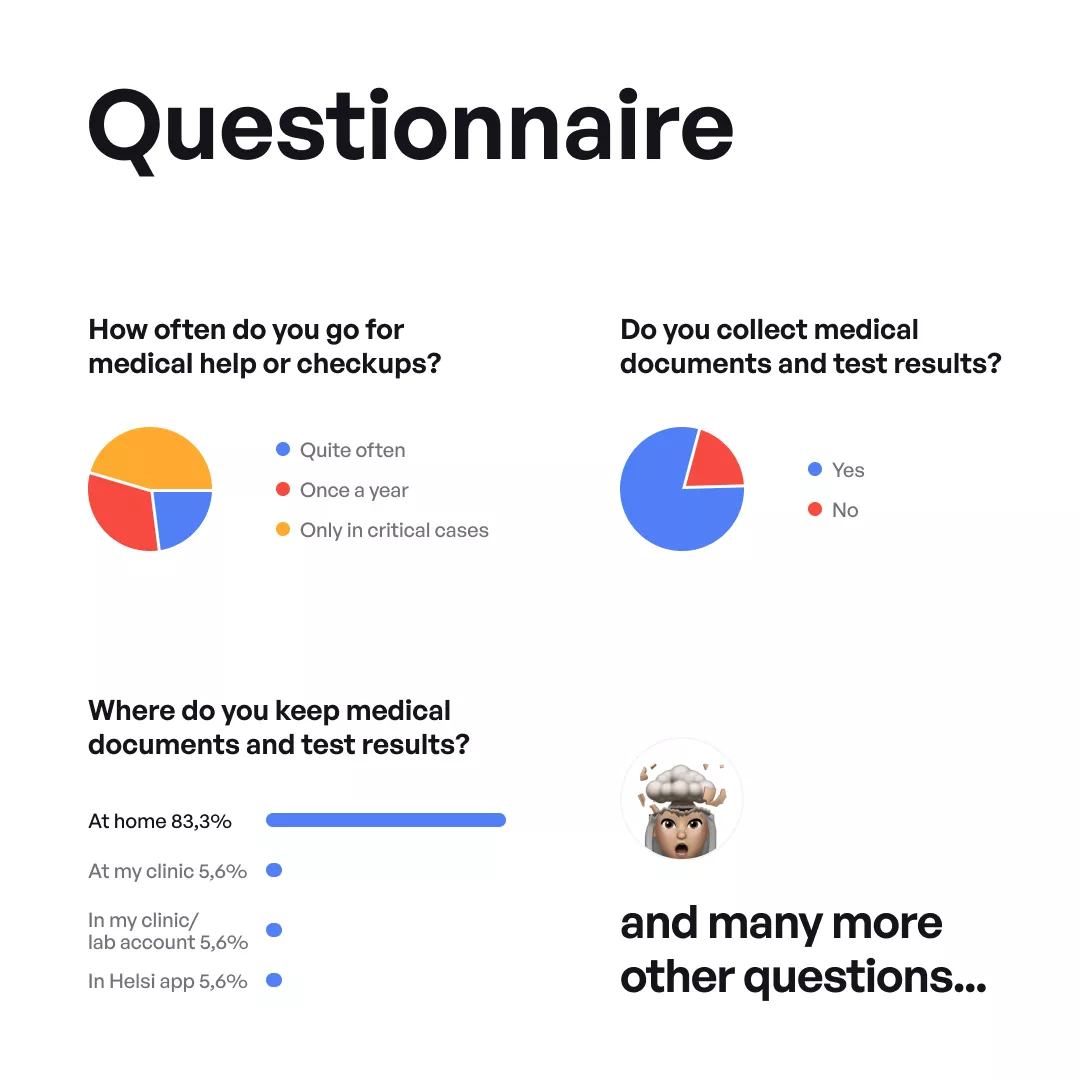A Discovery Session as the Crucial Step in the Creation of Medical Service Applications
A discovery session is an in-depth analysis of the product idea, hypothesis validation, contact with potential or existing users, and market analysis. It is done to make a product that meets users’ needs as much as possible, which at the same time will be functionally and profitably different from competitors. The step of the discovery session is crucial in terms of application creation to set design decisions in the right direction.
The team of Obriy Design Büro explains the role of the discovery session through the illustration of creating a mobile app concept for the healthcare industry.
About Medical Service mobile application
Medical Service is a concept of an iOS application created with a discovery session included in the process. Basically, it’s a multi-functional medical application with a core feature — storage of test results and synchronization with clinics and labs. So users can keep all the information in one place, communicate with their doctors and share the results on the go. Appointments and buying medicines are also included.
The Hypothesis
The initial step of the discovery session is hypothesis validation. The initial idea focused on the need for a single platform to effectively manage diverse medical information. To test this hypothesis, the Obriy team conducted in-depth user surveys and interviews with a diverse sample of over 10 respondents. This feedback helped to define key features, ensuring that the solution directly addresses the diverse challenges faced by patients.
The survey results highlighted the universal demand for a comprehensive medical record program that simplifies the complexity of healthcare information management.
This approach provides users with a unified platform that meets various medical needs and opens a new era of integrated and convenient medical programs.
Explore our glossary for essential mobile app marketing definitions to optimize your campaigns!
Detailed results of a survey
Based on the initial hypothesis and the collected information, a questionnaire was created and sent to the respondents who received some quantitative data.
The Obriy team conducted 15-minute interviews with respondents and captured key insights that formed the basis of the app:
- managing the results of surveys: respondents emphasized the importance of an effective system for storing the information received. The focus here is on convenient filtering options that provide easy access to specific information;
- real-time synchronization with laboratories: respondents expressed a desire to synchronize with laboratories in real-time, which would allow them to easily receive the latest medical information
- reminders to get tested;
- complete medical records: users were looking for the ability to add a variety of medical records, including X-rays and MRIs, providing a complete overview of their health history.
- archived results: Include an intuitive system for archiving past results;
- appointment scheduling: users expressed a need for a feature that would allow them to easily schedule appointments in the app;
- direct communication with healthcare providers: an integrated chat system for direct communication with healthcare providers was one of the key features.
The information received serves as the basis on which the functionality of our application is built.
Market analysis
By studying existing competitors and analyzing their functionalities, The Obriy team gained valuable insights that directly influenced the definition of key user needs and application functionality.
The findings were divided into two separate groups: advantages and disadvantages. The advantages highlighted features that resonated well with users and effectively addressed certain pain points. Conversely, the identified shortcomings highlighted areas where existing solutions failed to meet user expectations or provide comprehensive solutions.
The application interface
Based on the collected information, was created a user interface concept consisting of several screens: home, reminders and schedule, chat with a doctor, results, and user profile.
The home screen provides easy access to the app’s features, including notifications about completed tests, a global database search, a list of services, upcoming appointments, and discounts.
The purpose of the Appointments and Schedule page is to schedule appointments and tests, view the address, and access a map. Additionally, users can access their search and appointment history.
The app also offers an online chat with doctors, allowing users to ask questions and send files. Importantly, users can share test results within the app.
The “My Results” page was created to collect the results of records and tests.
The profile page includes a feature for exam reminders. Additionally, users can store medical records, add and edit clinics and laboratories, and track purchases within the app.
Conclusion
A discovery session is a crucial activity in the creation of applications, especially in socially significant fields like healthcare and medicine. The combination of innovation and user-centered design principles is gradually changing the overall approach to providing medical services. In healthcare applications, the user-first approach ensures that interfaces are accessible, easy to navigate, and adaptable to the diverse users in the healthcare system. By neglecting this process, you risk creating solutions that are out of touch with the needs of the product and fail to deliver the desired results and benefits for the industry.
The opinion of the author of the guest post may not reflect the position of the editorial board and specialists of Netpeak Agencies Group.
Related Articles
What Is a URL Slug, and How Do You Make It SEO-Friendly?
Let's figure out how to make URL slugs understandable for users and search engines and how to implement simple changes that will improve page visibility
Five Steps to Building a Keyword List and Clustering Keywords
In this article, I'll show you how to identify and group keywords in a way that will effectively attract your target audience
Amazon Dynamic Bidding: The Strategy and Psychology Behind Top Brands
Dynamic bidding on Amazon isn’t just another checkbox in your campaign settings; it’s the difference between throwing money at the Amazon advertising wall and orchestrating a symphony of strategic bid adjustments that separate the pros from the pretenders





